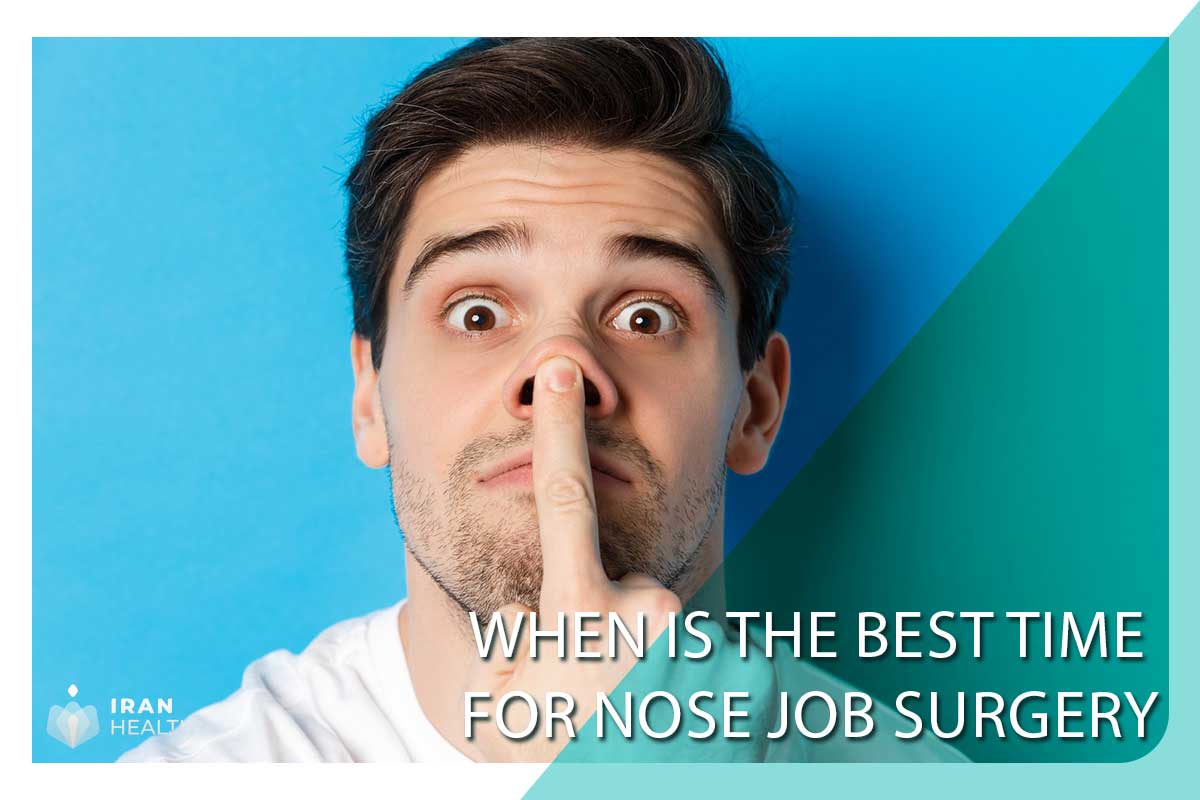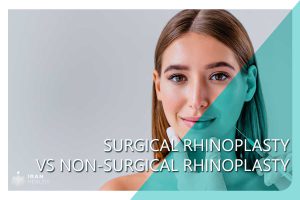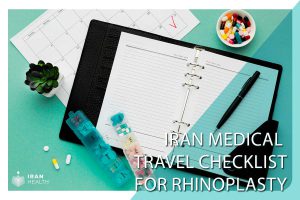What is the best time for nose job surgery?
What is the best time for nose job surgery?
Deciding when to undergo rhinoplasty surgery is an important consideration that can impact the recovery process and results.
While rhinoplasty can be performed at any time of the year, certain times may be more optimal depending on your schedule, the recovery process, and potential seasonal risks.
When choosing the best time to have rhinoplasty, “timing is everything” rings true.
The ideal timing for your rhinoplasty depends on multiple factors we will explore in depth throughout this article.
The goal is to help you identify the optimal time for surgery based on your individual needs and circumstances. Aspects like your work and school schedule, the recovery process, future events you may have planned, and even the time of year can all influence when it will be best to undergo rhinoplasty surgery. You can maximize your comfort, convenience, and cosmetic results by evaluating these variables and planning them correctly.
In Iran, rhinoplasty or nose job is a common procedure used to improve the appearance of the nose or correct any cosmetic or functional issues. However, those who are interested in getting a nose job may be unsure about when is the best time to undergo the procedure and which season is optimal for their operation.
General tips on what is the best time for rhinoplasty:
We want to share some suggestions regarding the most suitable time for rhinoplasty surgery:
- After the teenage years – Rhinoplasty is often recommended after age 15-16 for girls and a bit older for boys when the nose is fully developed. The early 20s are a standard time for rhinoplasty.
- When you’re emotionally ready – Rhinoplasty is a big financial and emotional decision. Make sure you’re doing it for yourself and in a good place mentally to handle the recovery process.
- When you can take time off – The rhinoplasty recovery period is around two weeks, during which you’ll have swelling, bruising and need to rest. So plan the surgery when you can take off work/school.
- Not during significant life events – Avoid scheduling it right before weddings, big trips, starting a new job, etc. Give yourself time to recover before substantial events.
- Winter is ideal – Since you’ll be bruised and swollen, winter is a good time as it’s cooler weather, and you can cover up more quickly. The summer heat won’t be as comfortable.
- Avoid flu season – It’s best not to undergo surgery when flu and other illnesses are most contagious, usually January-March. A fall or spring date is good if possible.
What is the best season for rhinoplasty?
When scheduling rhinoplasty surgery, it’s worthwhile to consider the season as the effects and recovery can vary. It’s helpful to understand season differences.
Winter:
Pros:
- Cooler weather makes it easier to cover up bruising/swelling.
- Less pollen/allergens during recovery.
Cons:
- Cold, dry air can slow healing and require extra moisturizing care.
- Risk of catching cold/flu.
Spring:
Pros:
- Moderate temperatures.
- Potential to be back to normal by summer.
Cons:
- Higher pollen counts could exacerbate nasal swelling and allergies.
Summer:
Pros:
- School/work vacations align well for downtime.
Cons:
- Heat and humidity make swelling, bruising and nostril irritation worse.
- Sun exposure must be avoided.
Fall:
- Pros: Mild weather and low humidity are optimal for recovery—low cold/flu risk.
- Cons: Seasonal allergies or colds could flare up. A busy time of year may mean less rest.
When considering nasal surgery, discussing the optimal timing with your surgeon is best. Generally, spring or fall offer ideal conditions for the procedure and recovery. However, the winter holidays or summer break may also be convenient options. It’s essential to be flexible with your recovery care and adjust it based on seasonal factors.
Rhinoplasty in fall and winter
Here is some more detailed information about rhinoplasty recovery during the fall and winter seasons:
Fall Rhinoplasty
Fall can be an excellent time for rhinoplasty surgery for several reasons:
- Weather – The cooling temperatures and lower humidity in fall can help minimize swelling and discomfort during initial recovery. Less irritation and dryness compared to summer heat.
- Scheduling – Kids are back in school so parents can carve out recovery time more efficiently. Holiday breaks also align well for downtime. Less disruptive to take time off work.
- Allergies – Fall pollen counts, and allergies have usually subsided, unlike spring. This allows for smoother breathing and avoids exacerbating nasal swelling.
- Illness – Colds and flu are less prevalent in fall than winter—lower risk of catching something that could impede healing.
- Activity – Can often resume light outdoor fall activities like walking once the surgeon approves. Won’t miss prime summer activities.
The only main downsides are the possibility of catching a seasonal cold and taking extra care to protect the nose from dry, cold air. Overall, fall is a comfortable and convenient time for rhinoplasty.
Winter Rhinoplasty Considerations
Having a rhinoplasty in winter can work but requires some extra preparation and care:
- Dryness – Heated indoor air can dry out nasal passages. Use a humidifier and saline spray regularly to keep nasal tissues moisturized.
- Illness – More likely to catch a cold or flu when people congregate indoors. Avoid crowds and sick people to reduce risk. Get a flu shot.
- Cover up – Winter clothing like scarves, hats and turtlenecks can conveniently conceal bruising and swelling. Don’t irritate the nose with wool fabrics.
- Weather – Extreme cold and wind should be avoided, as well as activities like skiing. Stick to indoor recovery activities until the surgeon approves exposure.
- Moisturize – Apply Vaseline or balm inside nostrils and use lip balm regularly to protect from harsh outdoor air. Keep skin hydrated.
With proper preparation for winter conditions, rhinoplasty recovery is very feasible. Be diligent with moisturizing and protecting the nose.
Here are some tips for recovering from rhinoplasty during the winter and fall:
Winter Tips:
- Use a humidifier – Keeping indoor air humidified prevents dryness, bleeding, and crusting. Aim to keep the humidity around 40-50%.
- Apply nasal salve – Before going outside, apply a protective balm or saline gel inside the nostrils to shield them from cold, dry air.
- Wear a face mask – A snug face mask can add a layer of warmth and protection for the healing nose.
- Drink warm fluids – Sipping warm broth, tea, and soup helps ensure proper hydration as cold air tends to dehydrate.
- Avoid crowds – Skip busy malls and holiday events to limit exposure to colds and flu.
- Moisturize skin – Use thick creams and lotions regularly to prevent windburn and soothe surgically-tightened facial skin.
Fall Tips:
- Get a flu shot – This protects the peak cold and flu season.
- Stock up on supplies – Get extra gauze, saline spray, medication refills, etc, so you don’t have to go out as much.
- Adjust pain medication – Take medications as prescribed by your doctor. Cold weather may increase nasal discomfort.
- Wear loose scarves – Light, loosely-draped scarves help filter and warm incoming air before it enters the nostrils.
- Ramp-up hydration – The low humidity of fall can lead to dehydration and dry nasal passages. Drink lots of fluids.
rhinoplasty in Summer and spring
Here are some critical considerations for rhinoplasty recovery during summer and spring:
Summer Rhinoplasty
- Heat – Hot, humid weather can exacerbate swelling and irritation. Stay hydrated, use cooling compresses, and stick to well-air-conditioned indoor spaces.
- Sun – Sun exposure should be avoided for 6-12 months post-op as the skin is highly susceptible to discoloration. Wear SPF, hats, and sunglasses. Don’t vacation anywhere sunny.
- Activities – Swimming and sweaty outdoor activities should be postponed until fully cleared by the surgeon not to disrupt healing.
- Scheduling – Summer break from school/college allows for uninterrupted recovery time. But many social events may need to be skipped.
- Allergies – Nasal swelling coupled with high pollen counts in summer can worsen congestion and allergies. Take antihistamines as needed.
Spring Rhinoplasty
- Pollen – High tree pollen counts in springtime can exacerbate post-op nasal swelling, congestion and allergies. Optimize with medications.
- Weather – Moderate spring temperatures are comfortable for recovery. But increased rain could mean more time indoors.
- Planning – Spring break aligns nicely with the recovery period. But spring weddings and graduations may need to be missed or scheduled later.
- Transition – As spring transitions to summer, heat, sun exposure, and activities require ongoing caution. Don’t rush back to regular exercise.
With proper aftercare and sun protection, rhinoplasty recovery is manageable in spring and summer. The surgeon can advise on best practices for warm weather recovery.
Summer Tips:
- Stay hydrated – Drink lots of fluids to help minimize swelling and keep nasal tissues moisturized. Water, coconut water, and electrolyte drinks are great choices.
- Use cooling compresses – Applying chilled compresses can relieve swelling and discomfort in the heat. Wrap an ice pack in a soft towel and apply for 10-15 minutes a few times daily.
- Wear sun protection – Use SPF 30 or higher on any exposed skin, as well as wide-brimmed hats and sunglasses to protect from sun exposure that could cause discoloration.
- Get an air conditioner – Recovery is far more comfortable in an air-conditioned environment. The cold, dry air will help minimize irritation and swelling.
- Avoid salty foods – High-sodium foods can increase swelling. Stick to a balanced diet with lots of fruits and veggies.
- Postpone summer trips – It’s best to avoid air travel and sunny vacations until the surgeon gives the all-clear.
Spring Tips:
- Take antihistamines – If you suffer from seasonal allergies, take medications like Claritin or Zyrtec to minimize congestion and swelling from pollen exposure.
- Use a HEPA filter – HEPA air purifiers help filter out allergens at home and create a “clean air bubble” during recovery.
- Rinse nasal passages – Use a saline nasal spray or rinse to keep quotes moisturized and clear of pollen irritants.
- Watch for temperature changes – With springtime weather fluctuations, layer clothing to comfortably go indoors and outdoors without shocking or irritating the nose.
- Avoid heavily flowering areas – Opt for indoor leisurely walks rather than strolls through pollen-heavy parks and gardens.
Important FAQ about what is the best time for nose job surgery?
When is the best age for rhinoplasty?
Can I have a rhinoplasty done during the holidays?
How long before a wedding should I get a nose job?
When can I resume exercise after rhinoplasty?
Is summer a lousy time for rhinoplasty due to heat?
How long should I take off work for rhinoplasty recovery?
Iran heath Agency; international care, local comfort!
For those traveling to Iran for rhinoplasty surgery, reputable medical tourism providers can offer guidance on the ideal timing for your procedure.
medical tourism in iran is an accredited organization that partners with top rhinoplasty surgeons and hospitals in Iran.
Our team can help international patients determine the optimal scheduling for surgery based on their individual needs.
Some key factors IHA considers when advising patients on rhinoplasty timing include nasal bone development, impending travel or life events, scheduling flexibility for recovery, and seasonal considerations.
We recommend planning your surgery for at least 4-6 months to ensure you obtain your preferred surgeon and hospital availability. Iran heath agency also suggests avoiding periods of extreme heat, cold or air pollution that could impair healing.
By consulting directly with IHA and our network of expert surgeons, you can pinpoint the perfect time to undergo rhinoplasty in Iran.
Our insights help international patients plan the ideal surgery date that accommodates factors like your schedule, nasal maturity, and seasonal climate in Iran.
With the Iran Health agency’s guidance, you can proceed confidently, knowing your rhinoplasty surgery will occur at the most favourable time.



